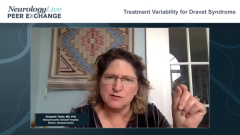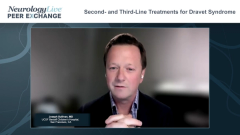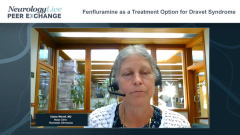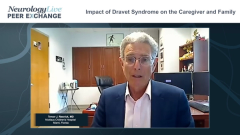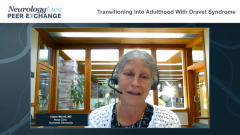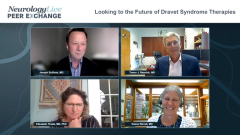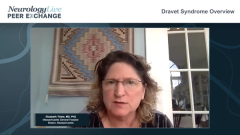
Treatment Therapies for Dravet Syndrome
A panel discussion on the North American Consensus statement on treating Dravet syndrome and the approved therapies like clobazam, ketogenic diets, and other first- and second-line therapies.
Episodes in this series

Joseph Sullivan, MD: We’ve been talking, somewhat skirting around expectations about our treatment goals. We now have a lot of options available to us. Let’s switch to all the treatment options we have available, how we go through those, how much of it is practically limiting, and how we have that conversation. Elaine, you and I and many of our colleagues worked on a consensus statement a few years ago and are working on the version 2.0 as we speak. Could you start with why we felt we needed consensus guidelines? These aren’t protocols. These are just meant to give some guidance. Why did we feel as a community that this was necessary?
Elaine Wirrell, MD: When we look at kids with Dravet syndrome, some medications make things worse. We know that as epileptologists, but when many of these children are initially treated, they may not be seeing an epileptologist. It’s important to be very clear that there are certain medications that should be avoided. There really weren’t data in the literature. There are data now, thankfully, but there weren’t many data in the literature on efficacy of medications. When that happens, sometimes we work together and try to get expert consensus on what a group of epileptologists agree would be the best therapy. That was the goal of that document, and also that it could then be provided to parents. They would have access to that and know the appropriate therapies to potentially ask their clinicians about. The document also addressed what we didn’t know, which was a lot. Hopefully version 2.0, which we’re working on now, will bring us forward a little.
Joseph Sullivan, MD: As we reflect on that process, I remember when we were going through the literature, it was a lot of anecdotes and expert opinions, including ours. Could you walk through what we came to believe is the first-line treatment? Even though we’re making this diagnosis earlier and earlier, these kids, even in their classical presentation, don’t come in with, “I have Dravet syndrome” written on their forehead. Even in the best hands, they’re often given an epilepsy diagnosis, and they’re treated not necessarily within in the framework of a Dravet syndrome diagnosis. Can you talk about what we felt were the first-line therapies?
Elaine Wirrell, MD: We thought valproic acid or clobazam would be reasonable in the first line, but when we looked at the data to support that, these were open-label and often retrospective studies with very small numbers of patients. There were actually very few studies. If you look at the data, the responder rates, which are the proportion of kids having a greater than 50% reduction in seizures, the rates for those medications were only between 25% and 50%. Although we put them down as first-line medications because we didn’t have a whole lot more at that point, we recognized that they were not very effective medications for most kids with Dravet syndrome.
We thought topiramate was a second-line agent. There have been a few studies showing marginal response rates in those patients. About half of kids will have a nice response to the ketogenic diet, although usually not seizure-free. Then we addressed stiripentol, although that was not yet available in the United States when we did our consensus.
Joseph Sullivan, MD: I certainly have patients who are on fill-in-the-blank medication. As long as it’s not a contraindicated medication, as Trevor brought up, and they’re doing OK, I personally don’t rock the boat. I wait until they fall into the parameter that we and the family consider not well controlled and then look to these guidelines. Elizabeth, can you expand a little on your other experience with the ketogenic diet or stiripentol and how those fit into your treatment algorithm?
Elizabeth Thiele, MD, PhD: Treatment guidelines in disorders like this are really important because with many neurologists and even some epileptologists, you might see 1 or 2 kids with a certain disorder. You might not get a sense of what works more effectively here or there. When guidelines are available, it really helps, especially with our growing number of possible treatment options. If we can say, “Here are all the options we have, but this one might be better in this situation,” it’s good for us and really good for the patient.
I’m a zealot for dietary therapy. If the first-line therapy doesn’t work or even if you know a child has Dravet syndrome, I would consider the ketogenic diet in the first line because it’s pretty easy to do in that age range. Many people think the ketogenic diet is difficult. I’m still seeing patients who are told it’s much too difficult. It was the mother of a patient with Dravet, Lori O’Driscoll, who told me many years ago that when she brought up the ketogenic diet to her neurologist, the neurologist’s response was, “Oh, that’s much too difficult.” To which she responded, “Nothing is as difficult as watching your child have seizures.” I am a big zealot for dietary therapy.
We use topiramate, which can be effective, but there are possible cognitive [adverse] effects and acidosis that can be seen with that. I don’t have as much experience with stiripentol, because unlike Elaine and others, we did not have great luck in the Massachusetts area getting payer approval or coverage of that before it was FDA approved. For many of my families, it was cost prohibitive. But we do put that in a regimen, in the list of possible therapies, especially because there is known efficacy in Dravet syndrome. I agree with you. If a patient comes into us on levetiracetam who we now know has an SCN1A mutation and Dravet syndrome, why rock the boat if the child’s doing well? But if the seizures break through or there’s any problem, I follow those guidelines. They’re very helpful, so I’m looking forward to version 2.0.
Joseph Sullivan, MD: Thank you for watching this NeurologyLive® Peer Exchange. If you enjoyed the content, please subscribe to our e-newsletters to receive upcoming Peer Exchanges and other great content right in your inbox. Thank you.
Transcript Edited for Clarity
Newsletter
Keep your finger on the pulse of neurology—subscribe to NeurologyLive for expert interviews, new data, and breakthrough treatment updates.


